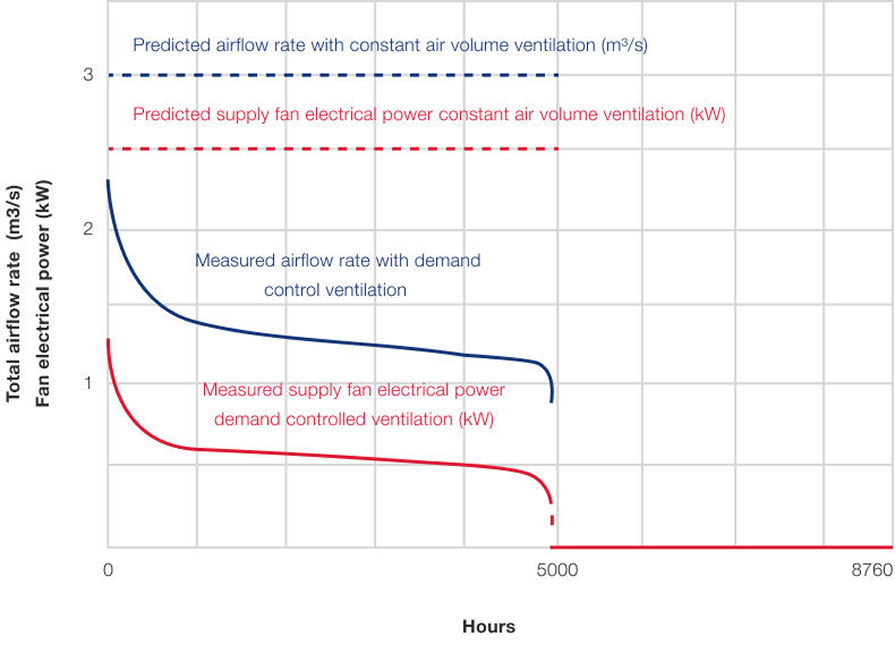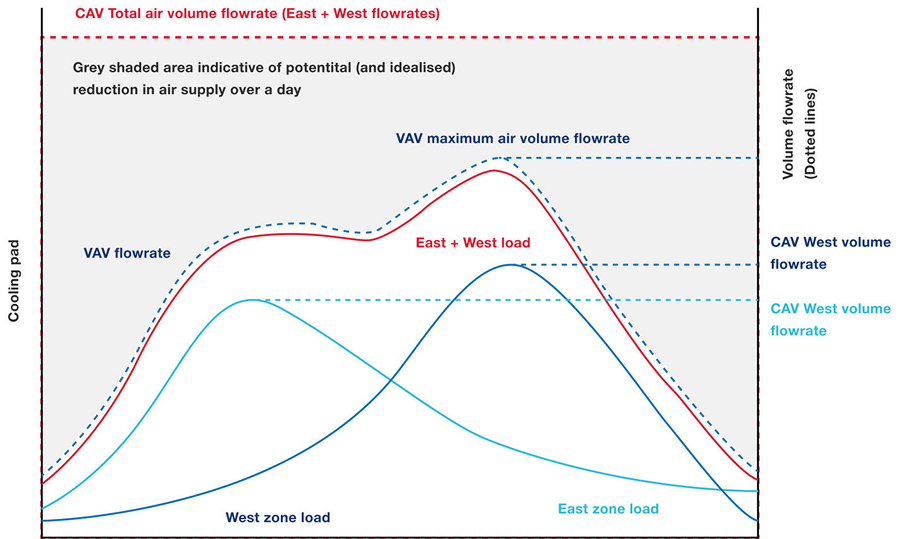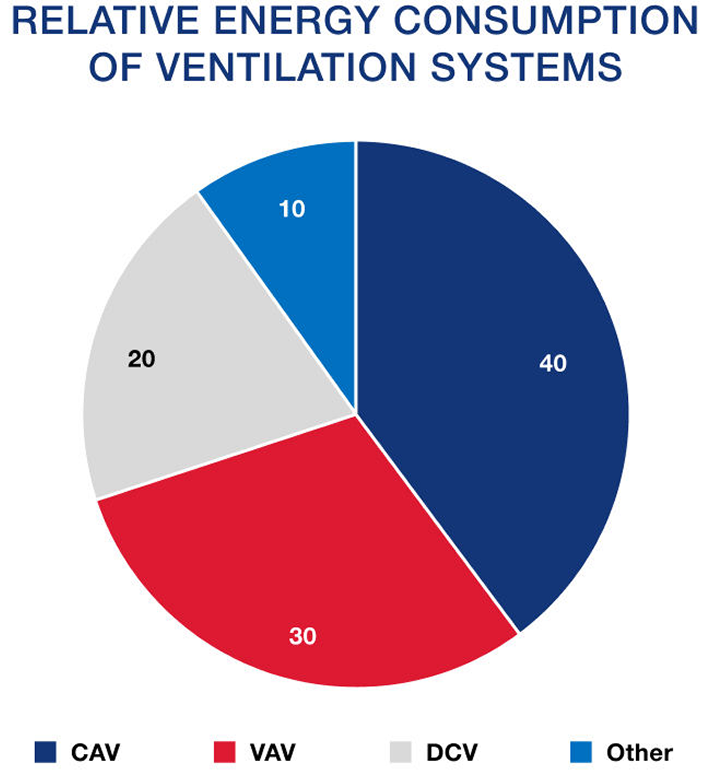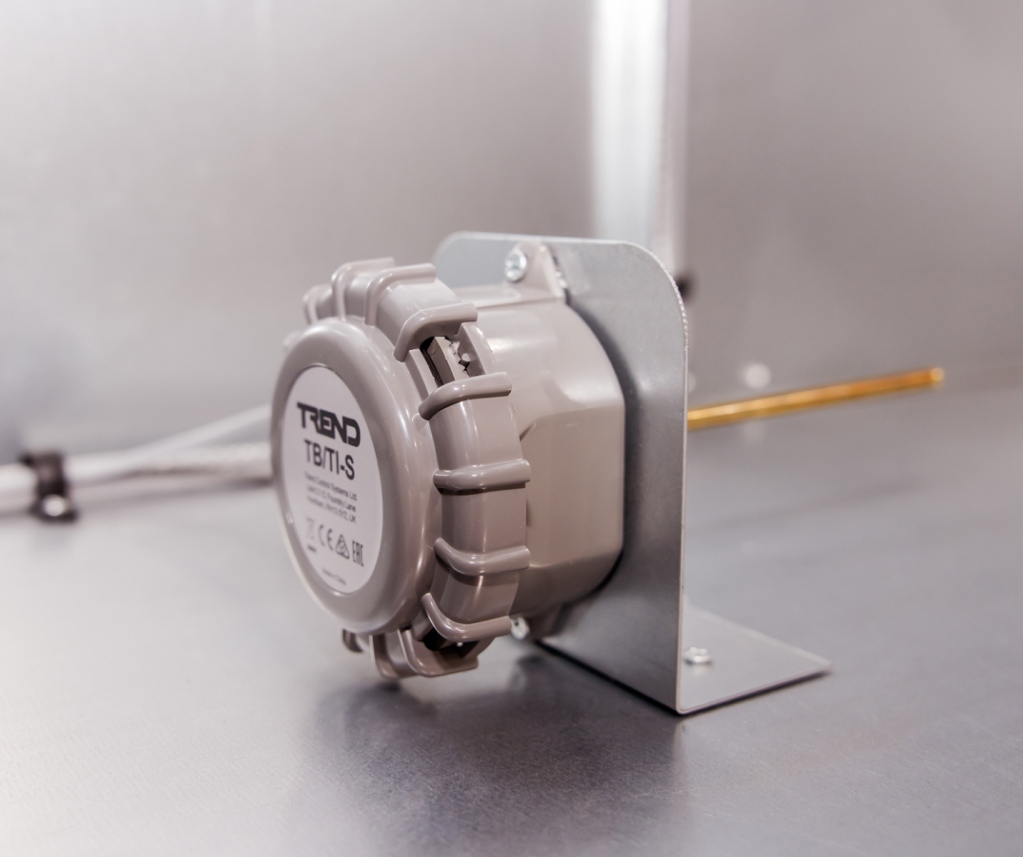Evaluating Control Strategies for Building Ventilation
For expertly carried out FATs, call 01634 729 690.
Evaluating Control Strategies for Building Ventilation: Constant Air Volume (CAV), Variable Air Volume (VAV), and Demand Control Ventilation (DCV)
Ventilation plays a crucial role in maintaining a healthy and comfortable indoor environment while also being a significant factor in a building’s energy consumption. Effective airflow management is essential for both occupant well-being and sustainability. This document explores three primary ventilation control strategies: Constant Air Volume (CAV), Variable Air Volume (VAV), and Demand-Controlled Ventilation (DCV), incorporating findings from UK university studies on their cost-effectiveness and compliance with UK building ventilation regulations.

Understanding Constant Air Volume (CAV) Systems: Simplicity with Potential for Waste
Constant Air Volume (CAV) systems are the most straightforward approach to mechanical ventilation. They deliver a fixed volume of air to a space regardless of the actual occupancy or heating/cooling load.
The fan in a CAV system operates at a constant speed, providing a steady flow of air through the ductwork. The temperature of this air is adjusted to meet the setpoint, but the volume remains the same.
As described above, with a CAV system the airflow rate is kept constant, while with a DCV system, it is modulated to meet the actual demand (as shown in Figure 1). A Demand-Controlled Ventilation or DCV system based on room temperature control adapts to the airflow and, hence, the cooling capacity to meet the cooling load – and larger load variations will provide increased potential for energy savings.
CAV Advantages
- Simplicity: CAV systems are relatively simple in design, installation, and operation.
- Lower initial cost: Generally, they have a lower upfront cost compared to VAV and DCV systems.
- Reliability: Fewer complex components can lead to greater reliability.
CAV Disadvantages
- Energy inefficiency: This is the primary drawback. CAV systems often over-ventilate during periods of low occupancy, leading to wasted energy on heating, cooling, and fan operation. The energy use doesn’t adapt to the actual demand, impacting energy efficiency and increasing carbon emissions.
- Limited control: Provides limited ability to tailor ventilation to specific zones or changing conditions within a space, potentially affecting thermal comfort.
- Potential for discomfort: Can lead to overcooling or overheating if the load changes significantly.
To ensure optimal performance and compliance, regular air handling unit maintenance and an air handling unit condition report are recommended for all CAV systems.
Understanding Variable Air Volume (VAV) Systems: Adapting Airflow to Demand
Variable Air Volume (VAV) systems offer a more dynamic approach by adjusting the volume of air delivered to a space based on real-time requirements.
VAV systems utilise components like variable speed drives (VSDs) on the air handling unit fan and VAV terminal units (often called VAV boxes) in individual zones. Sensors (like thermostats or occupancy sensors) in each zone signal the VAV box to modulate the airflow rate. If a zone requires less cooling or heating, the VAV box reduces the airflow to that zone, and the central fan slows down via the VSD, saving energy.
The key driver for implementing multizone Variable Air Volume systems in buildings with multiple zones that have loads that peak at different times is the ability to efficiently match airflow to actual demand, thereby reducing energy consumption. Unlike constant air volume (CAV) systems, which must supply a fixed airflow capable of meeting the maximum (peak) load in all zones simultaneously—often resulting in excess airflow and wasted energy—VAV systems dynamically adjust the airflow to each zone based on real-time occupancy and load conditions (as shown in Figure 2). This means VAV systems only supply the necessary amount of conditioned air to meet concurrent zone loads, leading to significant fan energy savings and improved overall energy efficiency. This flexibility makes multizone VAV systems particularly advantageous in buildings with diverse and varying load profiles throughout the day.

VAV Advantages
- Energy efficiency: Significantly more energy-efficient than CAV systems, particularly in buildings with varying occupancy or thermal loads. Energy consumption is better matched to the actual demand, supporting decarbonisation.
- Improved zone control: Allows for better individual zone control, catering to different comfort requirements in various parts of a building, and enhancing thermal comfort.
- Potential for improved indoor air quality: By avoiding constant over-ventilation, VAV systems can prevent the introduction of excessive outside air during periods when it’s not needed, which can help maintain a more stable indoor air quality (IAQ).
VAV Disadvantages
- Higher initial cost: Generally, it’s more expensive to install due to the added complexity of VAV boxes and controls.
- More complex maintenance: Requires more specialised knowledge for maintenance and troubleshooting.
- Potential for air stratification: In some cases, reduced airflow in VAV systems can lead to air stratification if not properly designed.
For reliable operation, ensure your air handling units are integrated with efficient management systems and maintained regularly.

Understanding Demand-Controlled Ventilation (DCV) Systems: Ventilation Driven by Need
Demand-Controlled Ventilation (DCV) represents the most advanced ventilation control strategy, using sensors to directly measure indicators of indoor air quality and adjust ventilation rates accordingly.
DCV systems typically employ sensors (most commonly CO2 sensors, but also potentially volatile organic compounds (VOCs) or occupancy sensors) to monitor indoor air quality (IAQ). When sensor readings indicate a need for more fresh air (e.g., rising CO2 levels due to increased occupancy), the system increases the ventilation rate. Conversely, when air quality is good and occupancy is low, the system reduces ventilation to a minimum level.
DCV can be implemented on both CAV and VAV systems. When implemented with VAV, it offers the greatest potential for HVAC energy savings.
Here’s a pictorial depiction of the relative energy consumption of ventilation systems:
DCV Advantages
- Maximised energy savings: Offers the greatest potential for energy savings, especially in spaces with highly variable occupancy, as ventilation is directly tied to the actual need for fresh air.
- Optimised indoor air quality: Ensures adequate fresh air is supplied when needed, improving occupant health and comfort.
- Reduced heating and cooling loads: By reducing the amount of outside air brought into the building when not required, DCV reduces the energy needed for heating and cooling that air, supporting energy efficiency and decarbonisation.
DCV Disadvantages
- Complex design and calibration: Requires careful design, installation, and regular calibration of sensors to ensure accurate readings and effective operation.
- Sensor placement and maintenance: Proper placement and ongoing maintenance of sensors are crucial for the system’s performance.
UK University Studies: Comparing the Costs
Several UK universities have conducted research to evaluate the performance and cost-effectiveness of different building ventilation strategies. These studies often highlight the significant energy savings potential of VAV and DCV systems compared to traditional CAV systems.
University of Strathclyde study
Research conducted at the University of Strathclyde in Glasgow has investigated the energy performance of different HVAC systems in commercial buildings. While specific studies directly comparing the lifecycle costs of CAV, VAV, and DCV might vary in their scope and focus, the general findings from such research often demonstrate the substantial energy savings achievable with VAV and DCV.
- CAV system: High operational energy costs due to constant ventilation, regardless of occupancy.
- VAV system: Significant reduction in operational energy costs compared to CAV, particularly in spaces with variable occupancy. The savings come from reduced fan energy and less energy spent on heating/cooling outside air.
- DCV system (integrated with VAV): Further reduction in operational energy costs compared to a standard VAV system, as ventilation is precisely matched to the actual need based on indoor air quality.
COST COMPARISON (BASED ON TYPICAL FINDINGS
FROM UK UNIVERSITY RESEARCH)
| SYSTEM TYPE | INITIAL COST (RELATIVE) | OPERATIONAL ENERGY COST (RELATIVE) | POTENTIAL ENERGY SAVING VS. CAV (%) |
|---|---|---|---|
| Constant Air Volume (CAV) | Low | High | 0 |
| Variable Air Volume (VAV) | Medium | Medium | 20–40 |
| Demand Control Ventilation (DCV) | High | Low | 40–60+ |
Case Studies
Objective Decarbonisation at The Coliseum
The primary goal of this project was to enhance energy efficiency, support decarbonisation efforts, and achieve cost savings for the Wetherspoons pub chain. This was accomplished by utilising a plate heat exchanger and a 3-way air mixing plenum to preheat incoming air, which work together to preheat incoming air as part of a modern mechanical ventilation strategy.
Objective Energy Savings at the Department for Education (DFE)
The primary goal of this project was multifaceted. Firstly, we needed to replace outdated equipment with modern, energy efficient ventilation systems—specifically, advanced air handling units capable of modulating from 110% down to 40% of design capacity to support a Variable Air Volume (VAV) approach.

Conclusion
The choice of ventilation control strategies significantly impacts a building’s energy consumption, operational costs, and indoor environmental quality. While Constant Air Volume (CAV) systems offer simplicity and lower initial cost, they are generally less energy-efficient, particularly in buildings with fluctuating occupancy. Variable Air Volume (VAV) systems provide a more efficient solution by adapting airflow to demand, leading to substantial energy savings. Demand-Controlled Ventilation (DCV), by using sensors to directly monitor air quality, offers the greatest potential for energy savings and optimised indoor air quality, although it comes with higher initial costs and complexity.
Research from UK universities consistently highlights the energy and cost benefits of VAV and DCV systems compared to traditional CAV. While the initial investment for VAV and DCV may be higher, the long-term operational savings, improved occupant comfort, and contribution to sustainability goals make them increasingly attractive and relevant in modern building design and management, especially in environments with dynamic occupancy patterns. Building owners and designers must carefully consider the specific needs and characteristics of a building to select the most appropriate and cost-effective building ventilation strategy for the long term.
Contact our team today
Get straight through to one of our engineers and start discussing the needs of your new air handling unit. Our team are on hand to work out a custom solution for you and your project. Just call 01634 729 690 or send us an email at sales@eceuk.com to get started.
